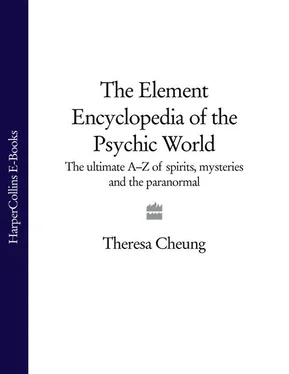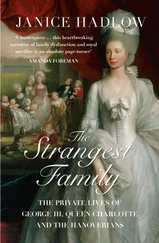Before the phenomena ceased, however, the respected psychoanalyst and researcher of paranormalphenomena Nandor Fodorsuggested that poltergeists were not ‘ ghosts’ but were bundles of ‘projected repressions’ that quickly wore themselves out.
Fodor theorized that so-called poltergeist activity was usually associated with a teenaged member of the family. When he investigated the case, he concentrated on Ted Pauls, the 17-year-old grandson. According to Fodor, Ted was a shy but talented and intelligent boy who was unconsciously using his mental power to create the disturbances. Fodor believed that the human body and mind could release energy ‘similar to atomic bombardments’, and could project this force into objects such as soda bottles, which would then burst from within.
Fodor thought that Ted felt misunderstood and longed to be esteemed for his writing talent. He theorized that Ted was unconsciously venting his frustrations by projecting them into aggressive poltergeist activity. Fodor explained this to Ted and suggested that if a way could be found to help him feel appreciated and valued as a person, he would have no need to express himself in such a destructive way. Fodor then took a risk by announcing that Ted was a gifted writer and that if his talent could be recognized the poltergeist activity would stop. He suggested that Ted should write his own account of what had happened, and, as expected, this had a therapeutic effect on Ted. His family gave Ted a newfound respect, and his self-esteem was boosted. Although a few more incidents happened (the psychological working-out process, as Fodor explained), they gradually stopped.
The Joneses, however, remained convinced that the plumber had solved the mystery.
In the words of the Irish playwright and poet, and expert in Irish folklore, William Butler Yeats:
The banshee (from ban [bean ] , a woman, and shee [ sidhe, a fairie]) is an attendant fairy that follows the old families, and none but them, and wails before a death. Many have seen her as she goes wailing and clapping her hands. The keen (caoine), the funeral cry of the peasantry, is said to be an imitation of her cry. When more than one banshee is present, and they wail and sing in chorus, it is for the death of some holy or great one. An omen that sometimes accompanies the banshee is the coach-a-bower (cóiste-bodhar) - an immense black coach, mounted by a coffin, and drawn by headless horses driven by a Dullahan. It will go rumbling to your door, and if you open it … a basin of blood will be thrown in your face. These headless phantoms are found elsewhere than in Ireland. In 1807 two of the sentries stationed outside St. James’s Park died of fright. A headless woman, the upper part of her body naked, used to pass at midnight and scale the railings. After a time the sentries were stationed no longer at the haunted spot. In Norway the heads of corpses were cut off to make their ghosts feeble. Thus came into existence the Dullahans, perhaps; unless, indeed, they are descended from that Irish giant who swam across the Channel with his head in his teeth. (From A Treasury of Irish Myth, Legend, and Folklore, ed. W B Yeats.)
In Irish and Scottish folklore the banshee is believed to be a death omenwho attaches herself to families, usually those whose surnames begin with Mac. Thought to be the spirit of a young woman who died in childbirth, she strikes terror into the hearts of those who encounter her as she only manifests when there is to be a death in the family.
There are variations in the way she appears. According to Irish lore the banshee is known as Bean Si and is a beautiful young woman with long, flowing hair, wearing a grey cloak over a white, red or green dress. Her eyes are always red and sore from crying. In both Scottish and Irish lore she is also known as Bean Nighe or little washer by the ford’. The Bean Nighe is thought to signal an imminent death by washing bloodstained clothes in a stream but, unlike the Bean Si, who is beautiful, the Bean Nighe is evil and ugly, with just one nostril, buck teeth, pendulous breasts and red webbed feet.
A few banshee stories entered into American folklore with the arrival of immigrants. One of them comes from the American South, where a crying banshee with long flowing yellow hair is thought to haunt the Tar River in Edgecomb County, North Carolina.
BARRETT, SIR WILLIAM FLETCHER [1844–1925]
A professor of physics at the Royal College of Science in Dublin, Sir William Barrett was one of the founders of both the Society for Psychical Researchand the American Society for Psychical Research. His published works included On the Threshold of the Unseen (1917) and Psychical Research (1920).
Barrett was fascinated by all things paranormal, and along with investigating ghostsand hauntingsand ESPhe also explored subjects such as altered states of consciousnessinduced through hypnotism and hallucination phenomena. Barrett’s study on apparitionsremains a classic read for students of the paranormal.
Battle Abbey was constructed by William the Conqueror on the site of his triumph over King Harold at the Battle of Hastings in 1066. Legend has it that a mysterious fountain of blood appears after rain on the ground, representing the Christian blood that was spilled there, although sceptics argue that the presence of iron in the soil accounts for reddish puddles of water.
A phantomis also thought to haunt Battle Abbey. Some believe it to be the Duchess of Cleveland, who lived at the abbey for a time. Others believe it to be the ghostof a monk who cursed Sir Anthony Brown for taking church property, after Sir Anthony was given Battle Abbey by Henry VIII in 1538. In 1932, two men holding a vigil in the crypt reported hearing strange noises in the room above, even though it was paved with asphalt, and a man’s voice singing ‘Gloria in excelsis’.
Places identified with violence, trauma and intense emotion are typically thought to be subject to hauntings. There are few places more violent and traumatic than battlefields, and it isn’t surprising that many battlefield locations have hauntings associated with them. It is thought that most battlefield hauntings are residual hauntings, in which fragments of the battle are imprinted upon the psychicspace of a place and picked up by sensitive individuals. Other hauntings are from spiritswho can’t find peace due to the violent and abrupt nature of their deaths. Those who specialize in spirit releasementtry to find ways to help these confused and traumatized soulsmove on. Some believe retrocognitionis also an element in battlefield hauntings. Re-enactors, people who recreate battle scenes in history, often report hauntings during their recreations.
In the USA there are numerous haunted battlefields from the American Civil War (1861-1865) and other violent struggles in American history. For example, Antietamand the Old Baylor’s Massacre site in River Vale, New Jersey, where members of the local militia (known as Baylor’s Dragoons) were brutally slaughtered by German Hessians in 1778, abound with reports of hauntings and strange happenings. In the UK both medieval warrior phantoms and ghostly soldiers from the English Civil War have been reported, and numerous battlefields from the world wars have ghost stories linked to them.
Читать дальше


![Theresa Cheung - The Dream Dictionary from A to Z [Revised edition] - The Ultimate A–Z to Interpret the Secrets of Your Dreams](/books/692092/theresa-cheung-the-dream-dictionary-from-a-to-z-r-thumb.webp)









